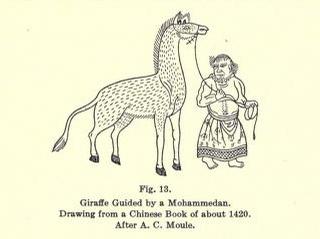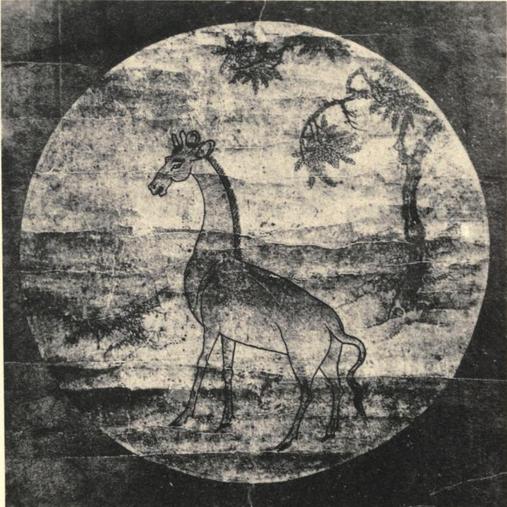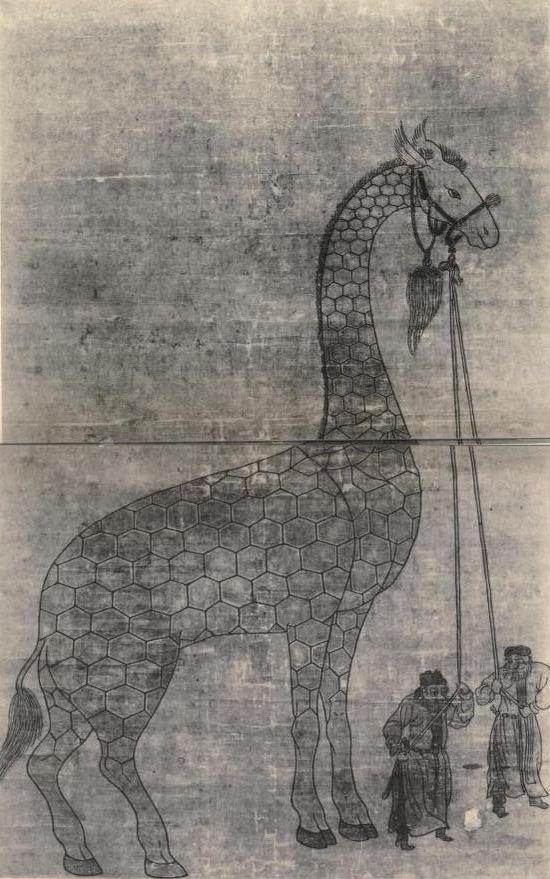Giraffes in Medieval China June 4, 2014
Author: Beach Combing | in : Medieval , trackbackThe giraffe, it is hardly necessary to say, is not indigenous to China. Yet from at least the thirteenth century, rumours began to travel back to the Middle Kingdom about a strange, long-necked creature in the west. This beast, sometimes called by the medieval Chinese the Camel-Ox, aroused only moderate interest: did Chinese travellers in Africa and, more likely Arabia, see the animal or were they relying on reports tumbling down the Silk Road? But this indifference did not last. We don’t know when the first giraffe arrived in China with certainty: several exotic African animals were brought east in the thirteenth century including zebras. However, giraffes had found their way to China in the fifteenth century as the Chinese treasure fleets fanned out into the Indian ocean: a notable achievement given how difficult it is to transport giraffes. The image above shows a ‘Chinese’ giraffe with two Arab handlers. (Love the ears).

This post is to showcase early Chinese drawings of giraffes because they are so… well, charming: the illustrations here likely all date to the fifteenth century and the shock of being confronted with these unexpected ‘monsters’. But there was a curious misunderstanding when the giraffe arrived in China that is also worth celebrating here. The Chinese told stories of a mythical creature named the K ‘i-lin. The K ‘i-lin is something that only Confuscians could have come up with. It was a unicorn (deer’s body and ox’s tale) though its horn had skin over bone. This animal was covered with fish scales and famed for its kindness and loving compassion. In the 1990s the manically depressed were sometimes taken out to swim with dolphins in the Atlantic: there are many people today who would benefit from a weekly ride on a K ‘i-lin.

What though has the K ‘i-lin to do with the giraffe? Quite simply when giraffes started being shipped through Aden and India to Cathay then Chinese antiquarians believed that the K ‘i-lin had returned among them. It is true that the neck was a little long. But there was a skin-covered ‘horn’ (actually two, the ossicones) and perhaps the dappling of the giraffe approximated to the Chinese view of fish scales? In any case, giraffes are Confuscian in character: the worst they will do is eat your begonias. This final, magnificent picture has the following verse scribbled onto it:
With the tail of an ox and the body of a deer [i.e. a k’-ilin], the animal is seen walking through the wilderness,
Auscpicous clouds are facing the sun, and the prosperity of the government is clearly in evidence
The people will meet with great success, and there will be a year of abundant harvest.
There will be plenty of food, and with songs they will praise the great peace.
It sounds like an i-ching oracle and yet it is a giraffe. Beautiful.
Other exotic animals traded afar? Drbeachcombing AT yahoo DOT com



